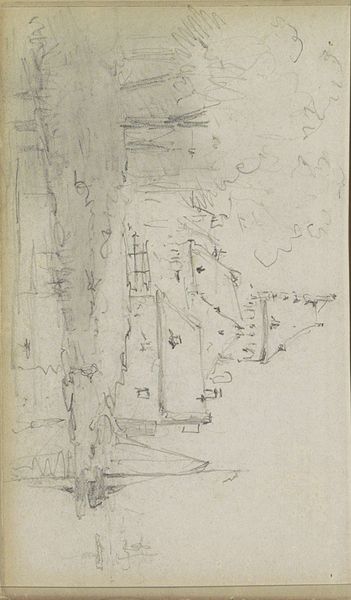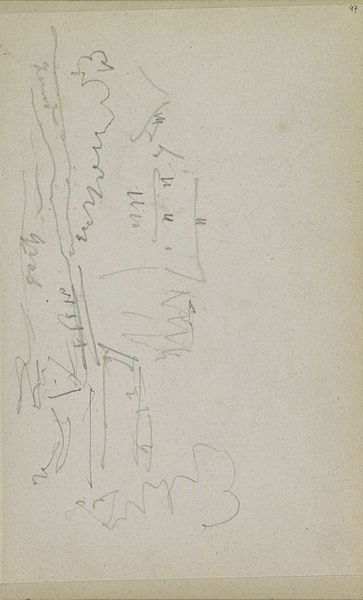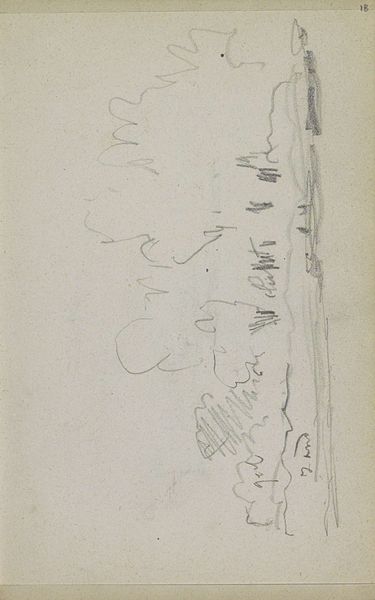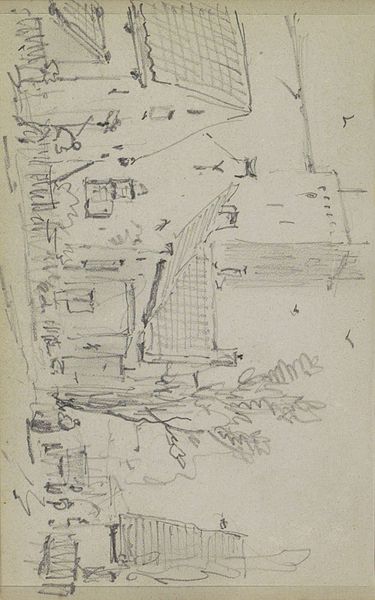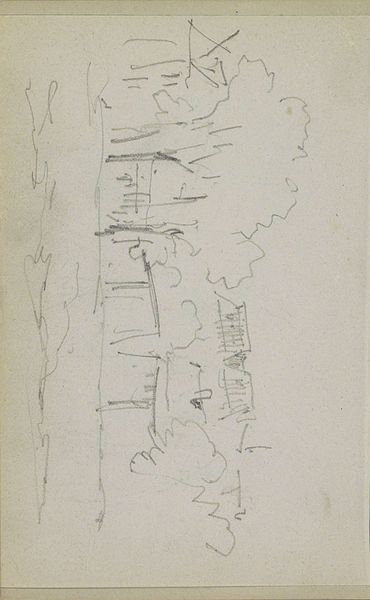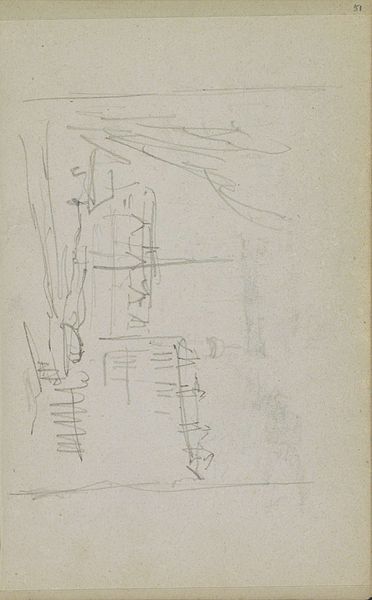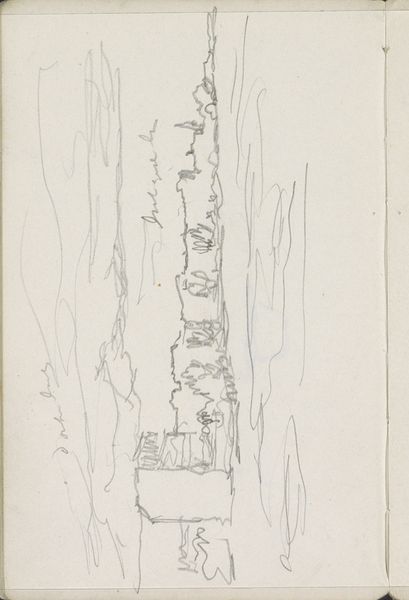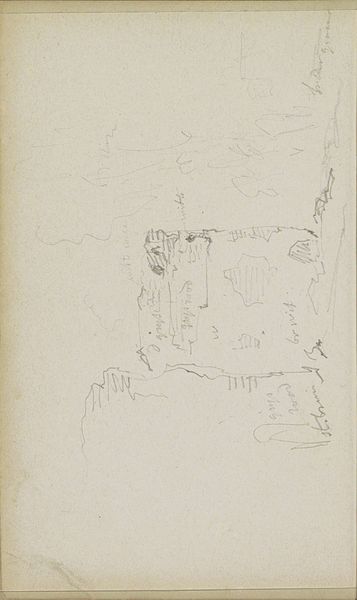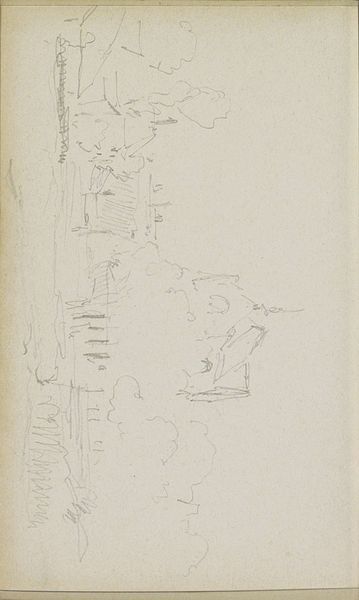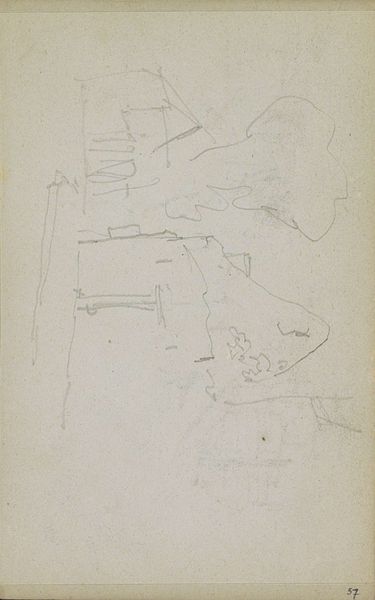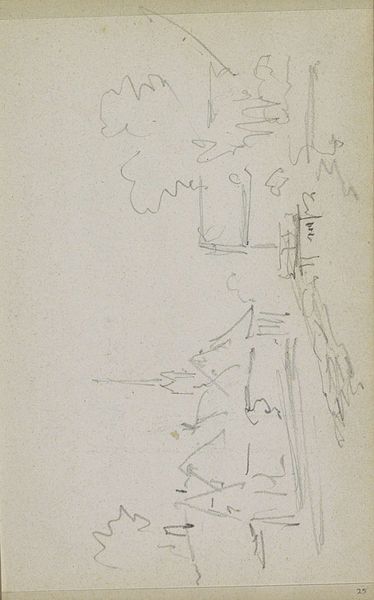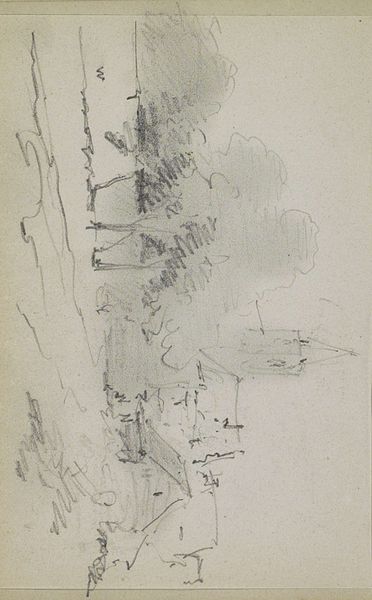
drawing, paper, pencil
#
drawing
#
landscape
#
paper
#
pencil
Copyright: Rijks Museum: Open Domain
Curator: Gazing upon Adrianus Eversen's pencil drawing, dating roughly between 1828 and 1897, titled "View of Buildings Along a Road or Water," I'm struck by its initial air of incompleteness. It feels less like a finished piece and more like a whispered idea, a fleeting impression caught on paper. Editor: Yes, there's a palpable sense of capturing something ephemeral, wouldn't you agree? Look at the stark contrast between the density of the pencil strokes depicting foliage versus the minimalist rendition of architectural forms. It immediately pulls one's attention. Curator: Indeed. The sketch seems to flirt with representation. Eversen employs these light, almost ghostly lines. The buildings become mere suggestions. Are we looking at a town holding its breath, a dreamscape on the verge of vanishing? The softness of the pencil lends itself beautifully to this sensation. Editor: Semiotically, that sparseness signifies more than just architectural drafting; it embodies a poignant commentary on urbanization—the precarious nature of our structures and habitats in periods of societal transition. Consider how line serves as both structure and dissolution simultaneously, which inherently challenges our perception. Curator: A lovely point! Also, what appears to be a lack of definitive detail somehow makes it more inviting. It allows for speculation, and your mind rushes in to complete the story that Eversen only hinted at. Was this a sunny afternoon or a cloudy morning? Who lived in those buildings? Was it a quiet road? So many untold stories! Editor: Precisely. Through visual reduction and linear strategy, Eversen compels the observer to actively participate in constructing the meaning of the sketch—implying it is, paradoxically, about change and transition, stillness, and memory. The medium itself, pencil on paper, speaks to transience. Curator: I like that. I see the hand of time moving swiftly in that regard, in its incompleteness, it urges to feel time as part of our experience and also as a force acting on buildings or landscapes as well as the lives inside it. Editor: Quite so! In its humble composition—mere lines that signify yet are also undefined—Eversen created not just an artwork, but an invitation. It's this constant flux between meaning and what evades meaning that truly encapsulates it for me.
Comments
No comments
Be the first to comment and join the conversation on the ultimate creative platform.
